Overview
This article delves into essential pH electrode storage solutions that are vital for ensuring the optimal performance and longevity of pH sensors. It underscores the importance of utilizing appropriate storage solutions, with a particular focus on potassium chloride (KCl) mixtures. These mixtures are crucial for maintaining hydration and preventing contamination, both of which are indispensable for achieving accurate and reliable pH measurements in various settings, including laboratories and field applications. By understanding and implementing these storage practices, users can significantly enhance the effectiveness of their pH sensors and ensure consistent measurement quality.
Introduction
Understanding the critical role of pH electrodes in scientific research and industrial applications underscores the necessity of effective storage solutions. With a diverse array of options available, each engineered to enhance performance and longevity, choosing the appropriate storage method can profoundly influence measurement accuracy. Amidst this multitude of choices, how can laboratories ascertain they are employing the most effective solutions tailored to their specific requirements? This article delves into seven distinct pH electrode storage solutions, each presenting unique advantages and addressing prevalent challenges faced by professionals striving to maintain optimal sensor functionality.
JM Science pH Electrode Storage Solution: Optimal Care for Your Electrodes
JM Science offers a specialized pH sensor preservation system that is essential for maintaining sensor hydration and optimal performance. This innovative approach is specifically designed to prevent dehydration and uphold the integrity of the glass membrane, which is critical for ensuring accurate and stable measurements over time. By utilizing high-quality potassium chloride (KCl) mixtures, JM Science's pH electrode storage solution effectively sustains osmotic pressure stability, thereby preventing contamination and damage to the sensors. This makes them particularly well-suited for the rigorous demands of laboratory environments.
The application of a 3M KCl mixture, achieved by dissolving 223.65 grams of KCl in 1000 ml of distilled water, not only extends the lifespan of the pH electrode storage solution but also guarantees consistent ionic balance, which is vital for precise measurements. Failing to employ KCl mixtures can lead to dehydration, increased drift, and potential contamination, which underscores the importance of JM Science's pH electrode storage solution. Consequently, JM Science's data management options are recognized as a preferred choice among professionals seeking reliable and high-performing pH measurement instruments, bolstered by positive feedback from laboratory specialists.
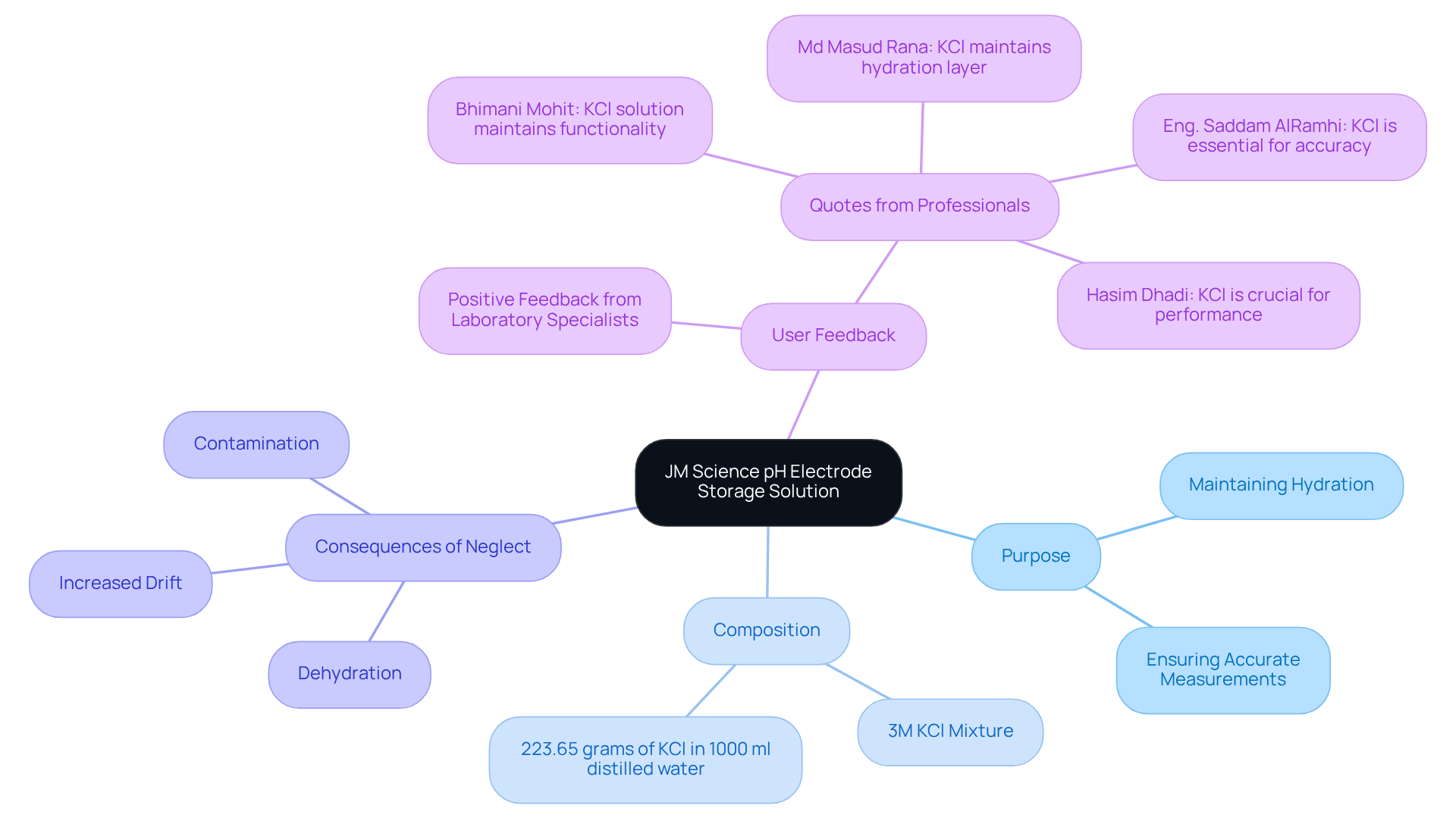
ThermoWorks pH Electrode Storage Solution: Reliable Hydration and Maintenance
ThermoWorks offers a pH electrode storage solution that underscores the importance of dependable hydration and maintenance. This innovative approach ensures that glass membrane sensors remain adequately hydrated during periods of inactivity, effectively preventing dehydration and guaranteeing consistent performance. The formulation boasts a balanced KCl concentration, which significantly enhances the durability of the components. As a result, the pH electrode storage solution stands out as an exceptional choice for laboratories that prioritize both accuracy and reliability in their scientific instruments.
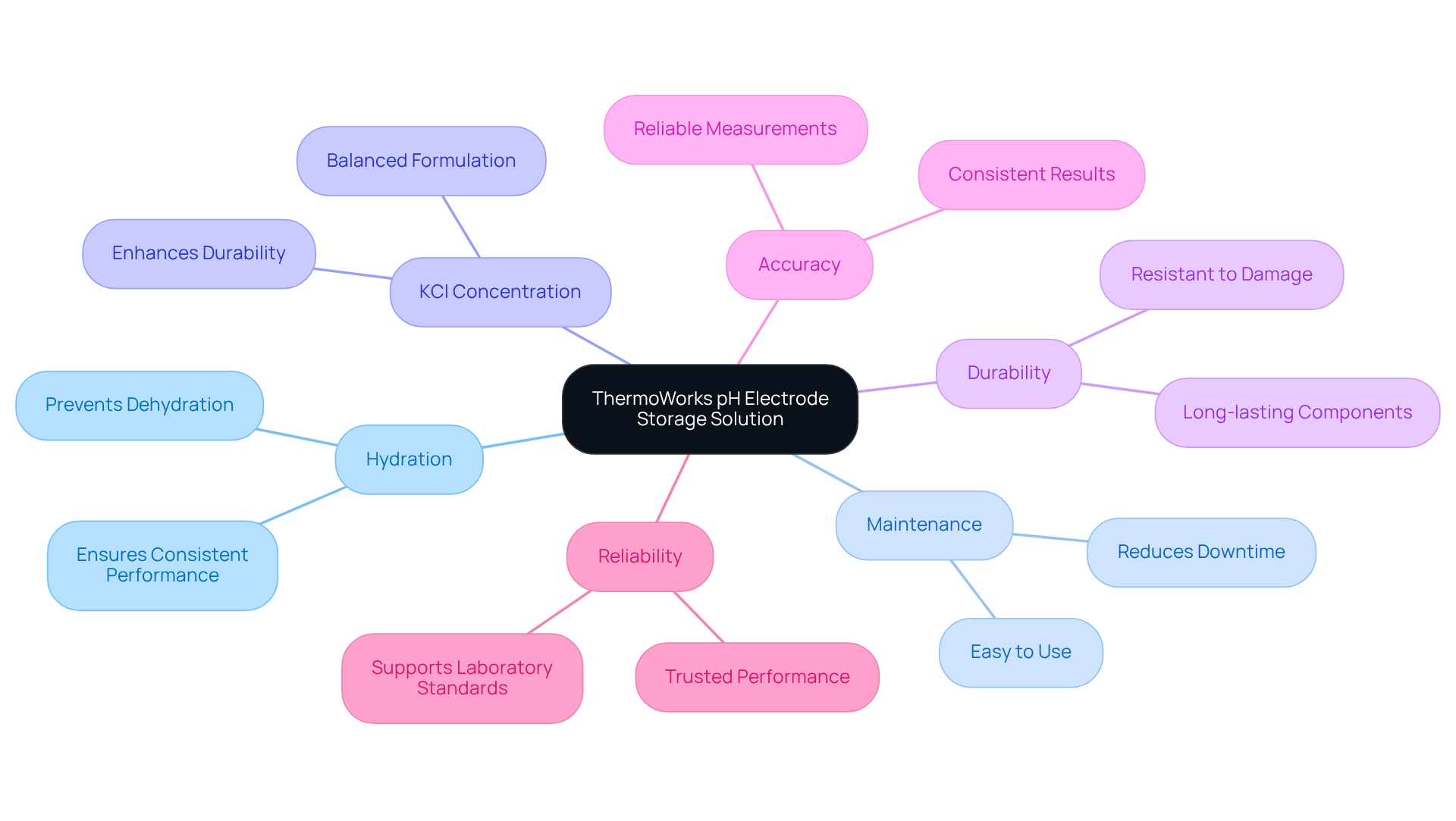
In-Situ pH Electrode Storage Solution: Designed for Field Applications
In-Situ's pH sensor preservation method is expertly designed for field applications, ensuring sensors remain operational even in the most demanding environments. This innovative approach is particularly beneficial for professionals conducting water quality evaluations or environmental oversight, as it effectively preserves the sensors' moisture and functionality during both transportation and field application. The robust design and formulation specifically address the needs of field researchers, instilling confidence that their equipment will deliver accurate results consistently.
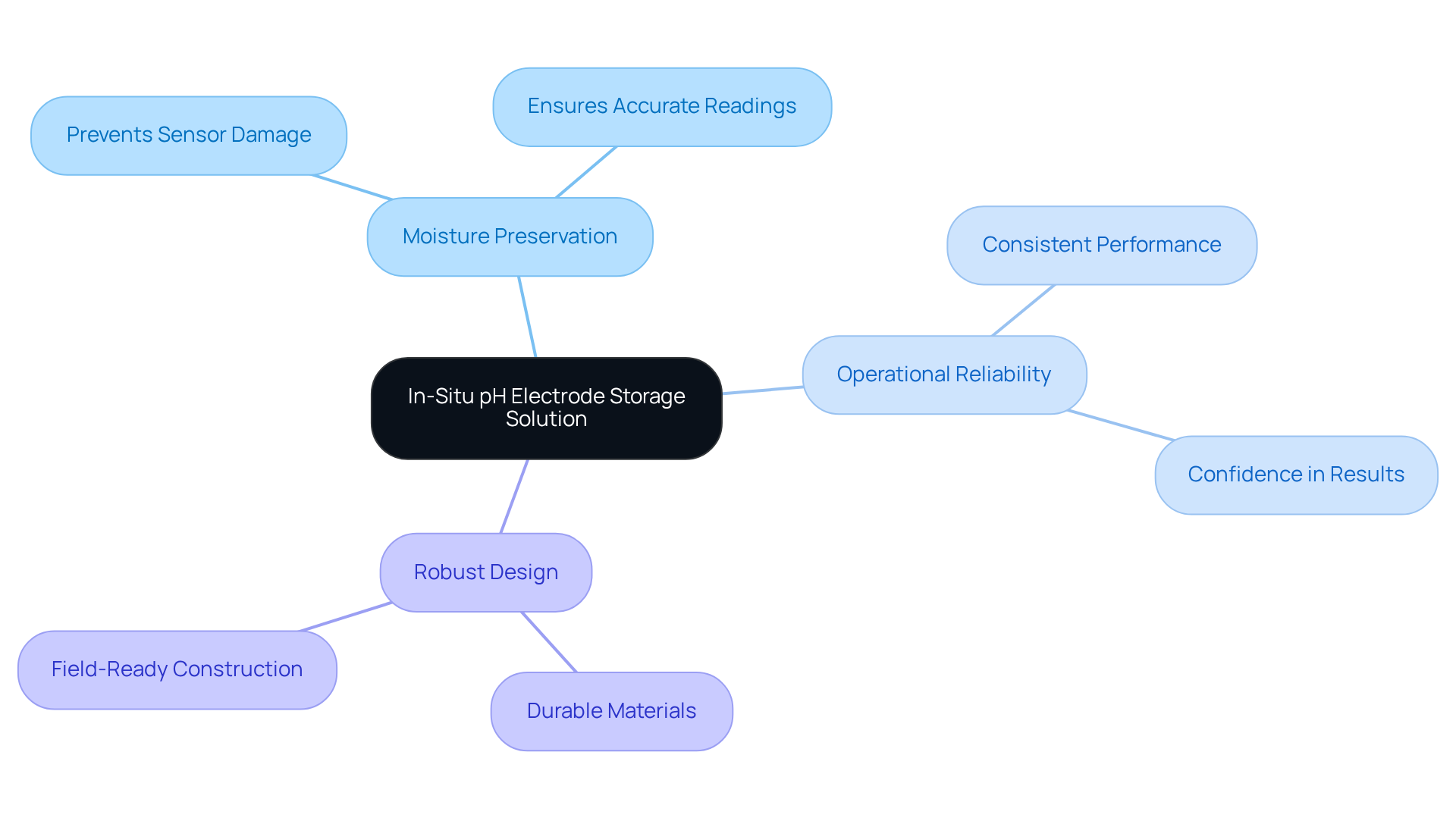
Dip Slides pH Electrode Storage Solution: Convenient and Effective for Laboratories
Dip slides serve as a practical and efficient pH electrode storage solution for storing pH sensors in research environments. They enable easy immersion of probes in a pH electrode storage solution, ensuring that they remain hydrated and ready for use. The compact design of dip slides is particularly beneficial for laboratories with limited space, and their effectiveness in maintaining performance is well-documented. This option is especially advantageous for labs that require rapid access to probes without compromising care. By integrating dip slides into your laboratory practices, you can enhance your operational efficiency and ensure the reliability of your pH measurements.
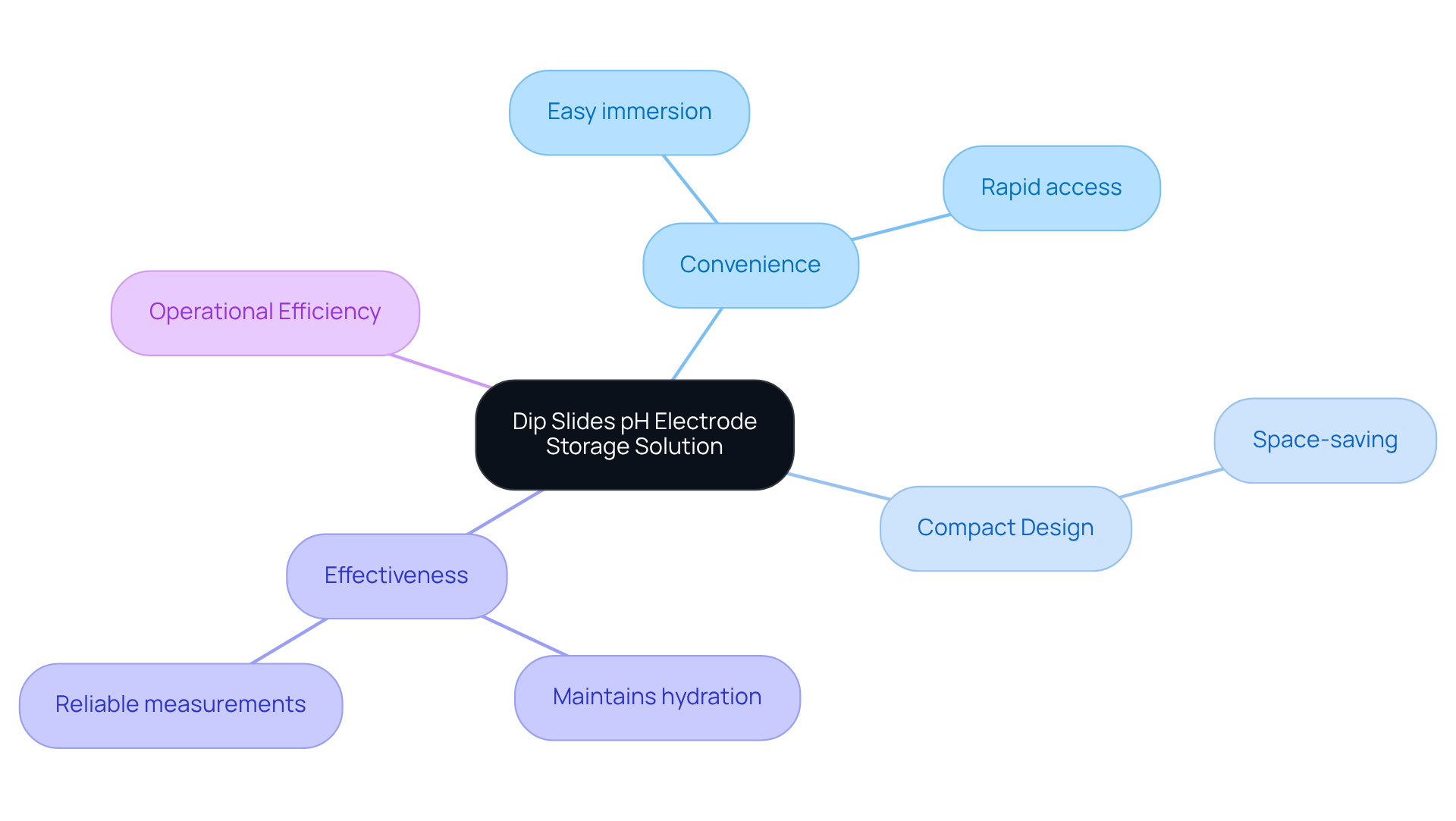
NTSensors pH Electrode Storage Solution: Advanced Conditioning for Precision
NTSensors offers a cutting-edge pH electrode storage solution that emphasizes advanced conditioning techniques to ensure precision in measurements. This innovative formulation is meticulously designed to preserve the essential ionic balance within the terminals, effectively preventing contamination that can compromise accuracy. By maintaining optimal equipment, facilities can rely on consistent and dependable outcomes, which are crucial in high-stakes environments where accuracy is paramount.
The significance of ionic balance is profound; it directly influences the performance and lifespan of the pH electrode storage solution. NTSensors' approach not only enhances measurement precision but also reduces the need for maintenance of the pH electrode storage solution, enabling staff to concentrate on critical tasks instead of routine upkeep. Notably, advancements in pH sensor technology, such as those developed by HORIBA Advanced Techno Co., Ltd., have achieved an impressive 99% reduction in maintenance work with their Gel-filled Self-Cleaning pH Sensor, underscoring the effectiveness of innovative preservation methods.
Real-world applications of these advanced conditioning techniques have showcased their efficacy across various laboratory environments, illustrating how they contribute to enhanced operational efficiency. For example, HORIBA's Gel-filled Self-Cleaning pH Electrode proves particularly advantageous in sewage and wastewater treatment plants, where pH testing is essential. Laboratories utilizing NTSensors' data management systems report improved sensor performance, which is vital for achieving precise and consistent results in experiments and analyses. As Dr. Masao Horiba, the founder of HORIBA, Ltd., envisioned, the creation of a sensor that remains uncontaminated exemplifies the ongoing innovation in pH measurement technology.
KCl Solution Benefits: Why pH Electrodes Thrive in Potassium Chloride
Potassium chloride (KCl) mixtures are recognized as the premier choice for pH sensor storage, primarily due to their ability to sustain the essential ionic environment required for optimal sensor functionality. By preventing the glass membrane from drying and ensuring the hydration of the reference junction, KCl mixtures are critical for achieving accurate pH measurements. The stability offered by KCl in the pH electrode storage solution not only enhances the performance of pH sensors but also significantly extends their lifespan, making these solutions indispensable for laboratories committed to delivering consistent and reliable results.
Case studies illustrate the effectiveness of KCl mixtures in preserving sensor integrity. For instance, regular replenishment of the KCl liquid in the reference chamber is vital to prevent solidification, which can compromise measurement accuracy. It is advisable to replace the internal electrolyte fluid every 2-3 months to maintain the operational integrity of pH sensors, ensuring they remain precise and dependable over time.
Moreover, the 3 M concentration of KCl closely mimics the internal filling fluid of most pH sensors, thereby minimizing unwanted ion exchange and enhancing stability. This chemical neutrality mitigates the risk of contamination, allowing the junction to stay free from impurities. Consequently, facilities utilizing KCl solutions report improved lifespan and functionality of their pH sensors, emphasizing the role of a pH electrode storage solution in achieving optimal analytical results. Dr. Gautam Sharma emphasizes, "The glass membrane of a pH sensor must remain hydrated to function effectively," highlighting the crucial role of KCl in sensor maintenance.
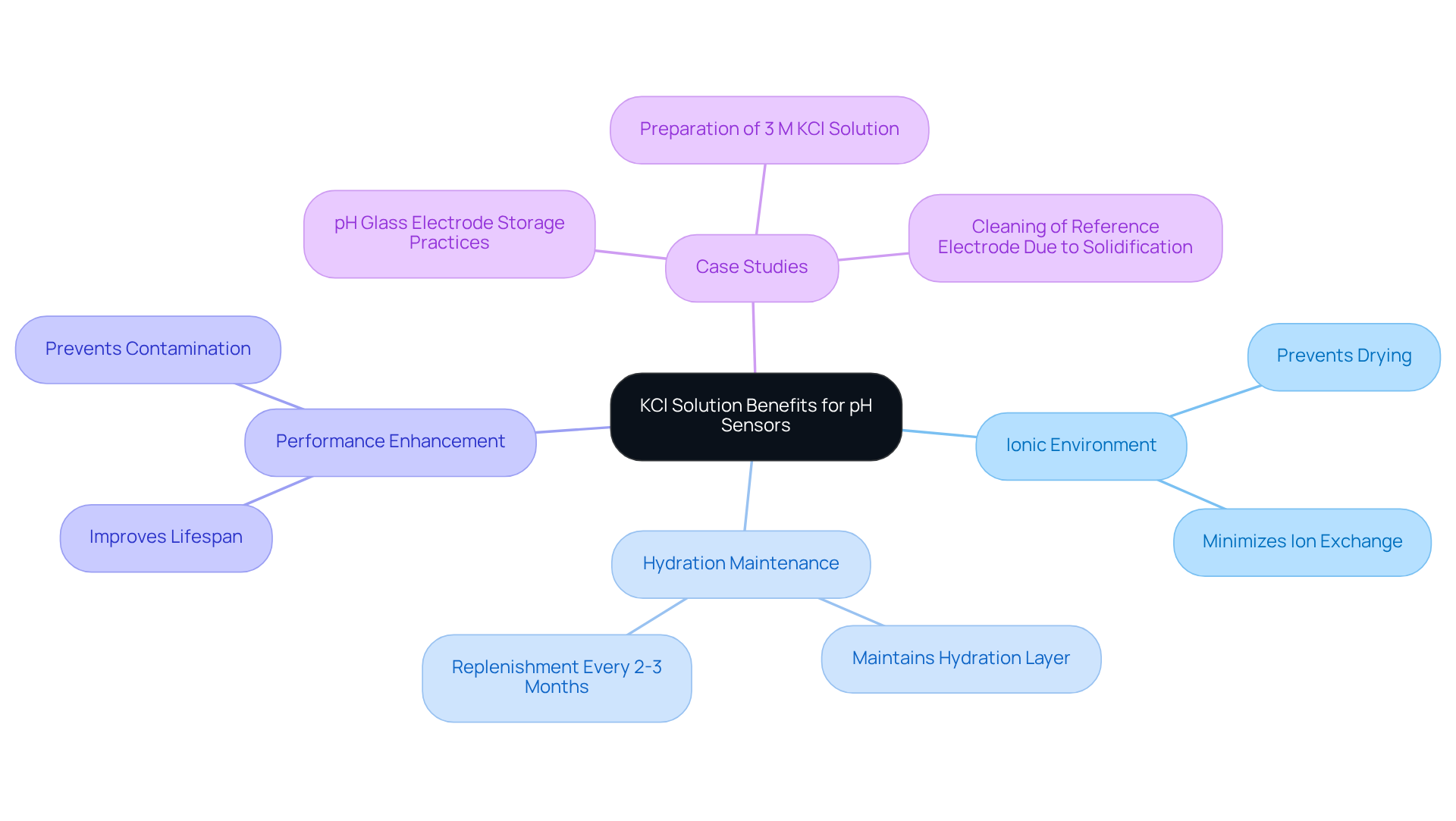
Best Practices for pH Electrode Storage: Ensuring Longevity and Accuracy
To ensure the longevity and accuracy of pH electrodes, laboratory professionals must adhere to essential best practices that safeguard these critical instruments.
- Use Appropriate Storage Solutions: It is imperative to store probes in suitable solutions, such as potassium chloride (KCl) or a buffer solution, to maintain optimal ion concentration. High ion concentration and low electrical resistance in the reference component are crucial for accurate readings.
- Avoid Deionized Water: Storing sensors in distilled or deionized water can lead to dehydration of the delicate glass membrane, compromising measurement accuracy. If immersion is not maintained, this can render the pH meter unusable.
- Routine Assessment of the Mixture: Periodically examining the state of the medium and replacing it as necessary is vital for preserving the integrity of the conductors.
- Maintain Cleanliness: Before storage, it is essential to ensure that components are clean and free from impurities. Adhering to specific cleaning protocols based on the substances being assessed helps prevent contamination and preserves functionality. For instance, utilizing appropriate cleaning agents for oils or proteins can significantly enhance measurement accuracy.
- Store Vertically: Components should be placed upright to prevent leakage of the preserving liquid and minimize the risk of contamination.
Real-world examples underscore the significance of these practices. Facilities that maintain appropriate preservation conditions have reported enhanced precision and extended lifespan of their pH meters. Case studies reveal that keeping electrodes in ion-rich environments is essential for upholding the integrity of the glass membrane and gel layer, both critical for precise pH readings. Furthermore, laboratories can produce homemade preservation buffers using potassium chloride and deionized water, offering economical solutions for research facilities. By implementing these best practices, laboratories can significantly reduce measurement errors and ensure reliable data across diverse scientific applications.
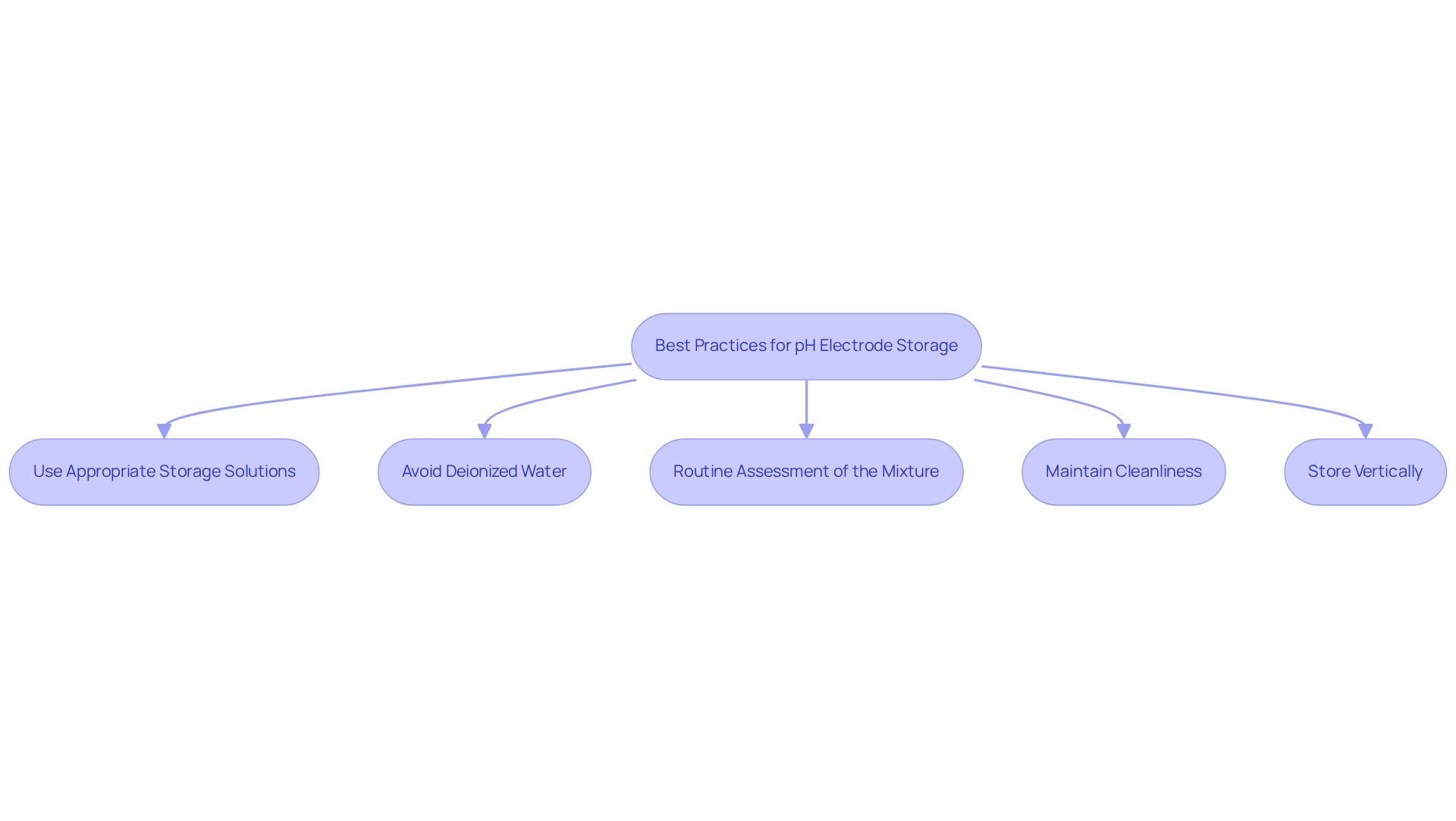
Common pH Electrode Storage Mistakes: What to Avoid for Optimal Performance
Frequent errors in pH sensor preservation can lead to significant issues.
- Storing components in distilled or deionized water can result in dehydration, compromising their functionality.
- Failing to update outdated methods may lead to contamination, which can affect the accuracy of measurements.
- Neglecting to clean the terminals before storage introduces contaminants that can interfere with performance.
- Keeping conductors in a horizontal position risks the leakage of the retaining fluid, further jeopardizing the sensors.
- Disregarding the producer's guidelines for preservation conditions can result in early failure of the components, underscoring the necessity for adherence to best practices in sensor maintenance.
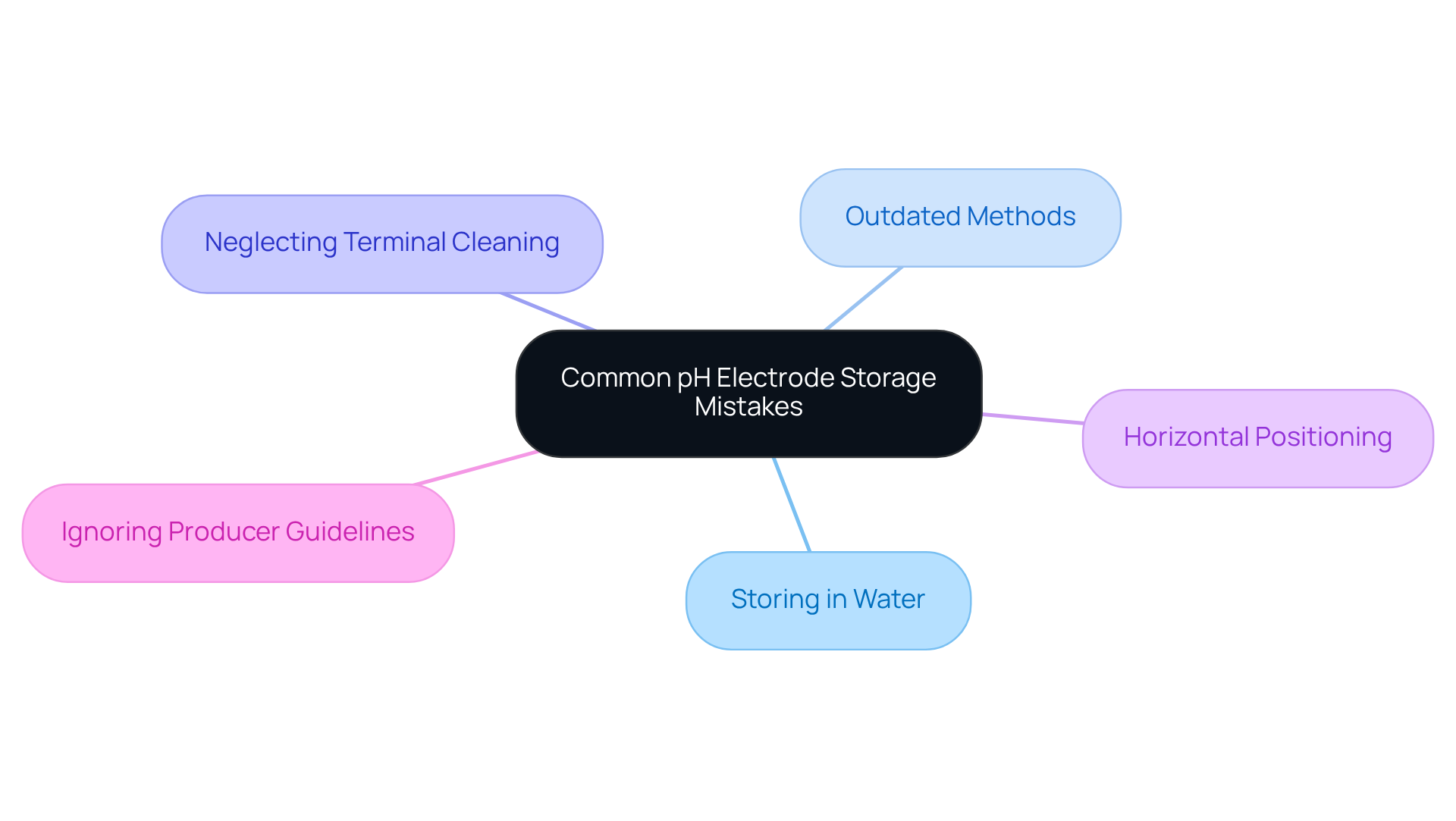
Eco-Friendly pH Electrode Storage Solutions: Sustainable Choices for Laboratories
Eco-friendly methods for pH electrode storage solution are increasingly recognized as essential for laboratories striving to reduce their environmental impact. These innovative approaches often utilize biodegradable materials and sustainable production techniques.
For instance, several manufacturers offer preservation solutions that are devoid of harmful chemicals and packaged in recyclable materials. By choosing these eco-friendly alternatives, laboratories not only show their commitment to sustainability but also guarantee the effective maintenance of their pH electrode storage solution.
This alignment of environmental responsibility with operational excellence is crucial in today's scientific landscape.
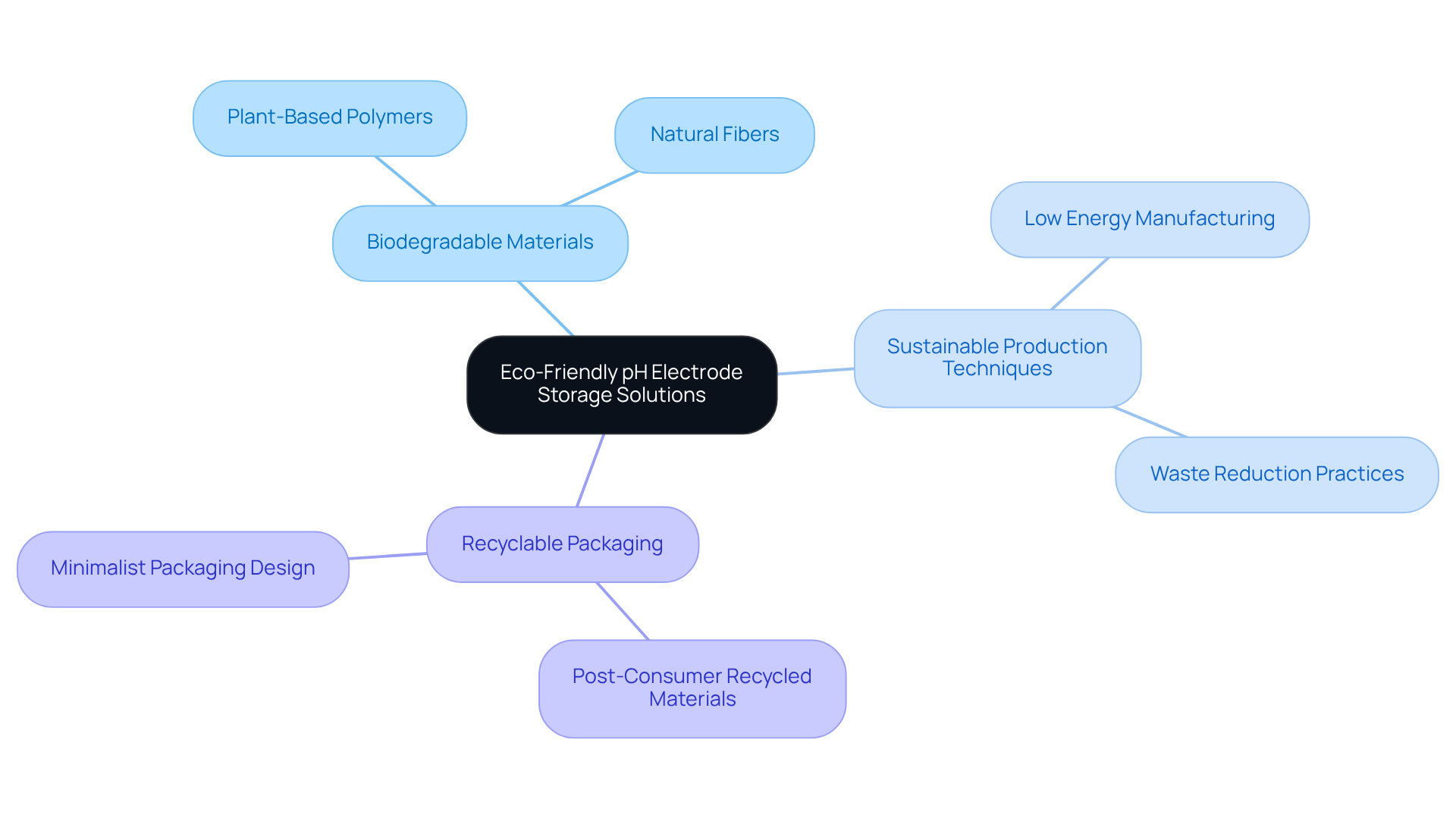
Future Trends in pH Electrode Storage: Innovations to Watch
Upcoming developments in pH sensor preservation are set to incorporate pH electrode storage solutions alongside intelligent technologies and innovative materials. Noteworthy innovations, such as HORIBA's gel-filled, self-cleaning pH sensor launched in November 2022, alongside systems featuring real-time hydration monitoring, are on the horizon.
Furthermore, advancements in materials science are expected to yield more resilient and eco-friendly pH electrode storage solutions, which reflect the growing demand for sustainable practices within research facilities. Industry reports indicate that the increasing necessity for real-time monitoring in the pH sensor market is propelling the development of these technologies.
Laboratories that integrate these cutting-edge pH electrode storage solutions will significantly enhance their capacity to maintain electrode performance and accuracy, thereby positioning themselves advantageously in a rapidly evolving scientific landscape. This proactive approach not only ensures adherence to stringent quality standards but also supports the rising emphasis on sustainability in laboratory practices.
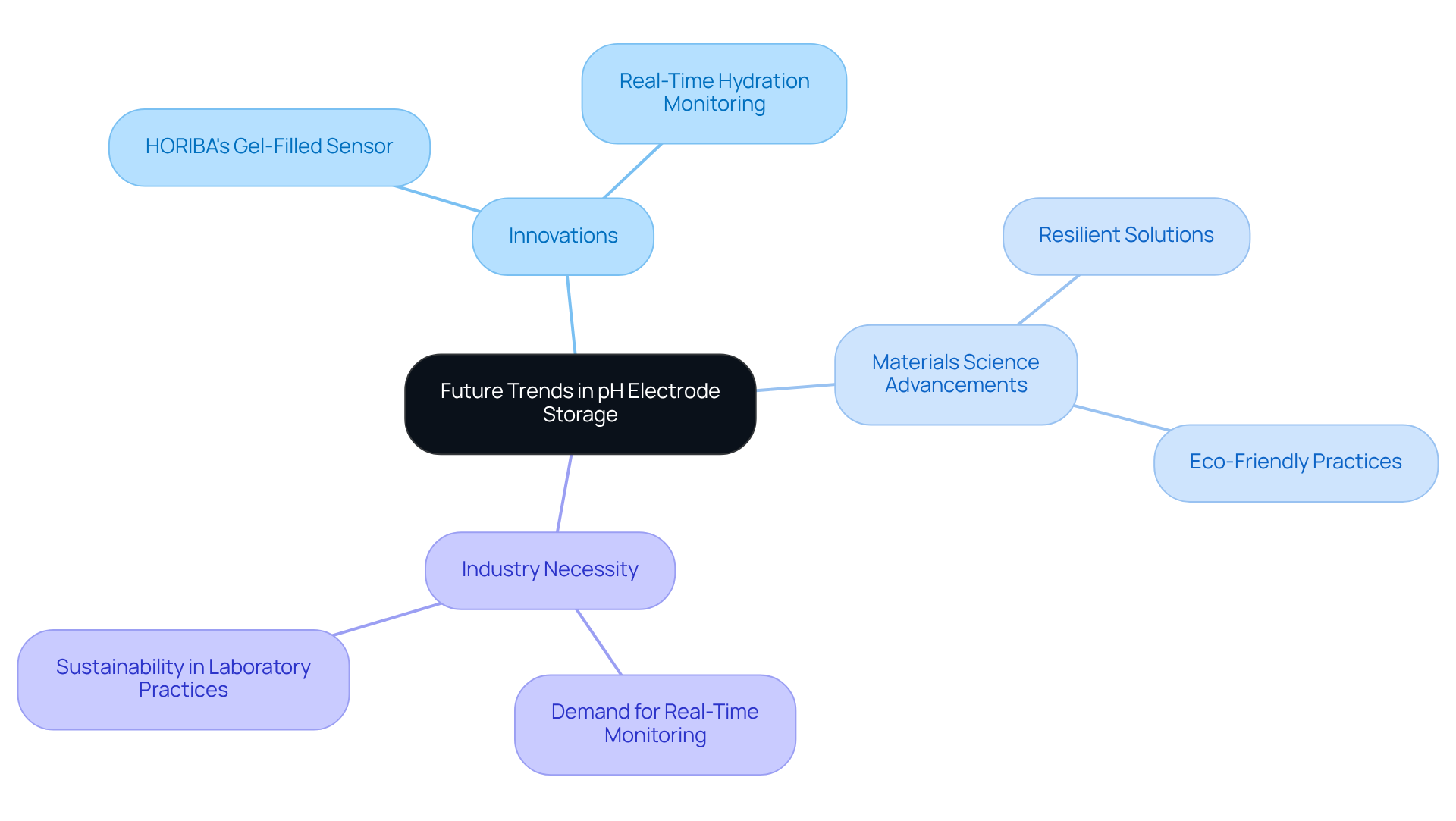
Conclusion
Understanding the significance of pH electrode storage solutions is pivotal for laboratories aiming to achieve accurate and reliable measurements. Selecting the right storage method not only prolongs the lifespan of these critical instruments but also enhances their performance in various applications. This article explored seven distinct storage solutions, each tailored to meet specific needs, from the robust formulations of JM Science and ThermoWorks to the innovative field applications of In-Situ and the convenience of dip slides.
Key insights highlighted the importance of potassium chloride (KCl) mixtures in maintaining the ionic balance essential for pH sensors, as well as best practices for storage that prevent common pitfalls such as dehydration and contamination. Additionally, advancements in eco-friendly solutions and future trends indicate a growing commitment to sustainability within laboratory practices, ensuring that effective preservation methods align with environmental responsibility.
As laboratories continue to navigate the complexities of pH measurement, adopting the most suitable storage solutions will be crucial for maintaining accuracy and reliability. Embracing these innovative practices not only enhances operational efficiency but also positions laboratories at the forefront of scientific excellence. With the right approach to pH electrode care, professionals can ensure that their measurements remain precise, ultimately contributing to the advancement of research and industrial applications.




